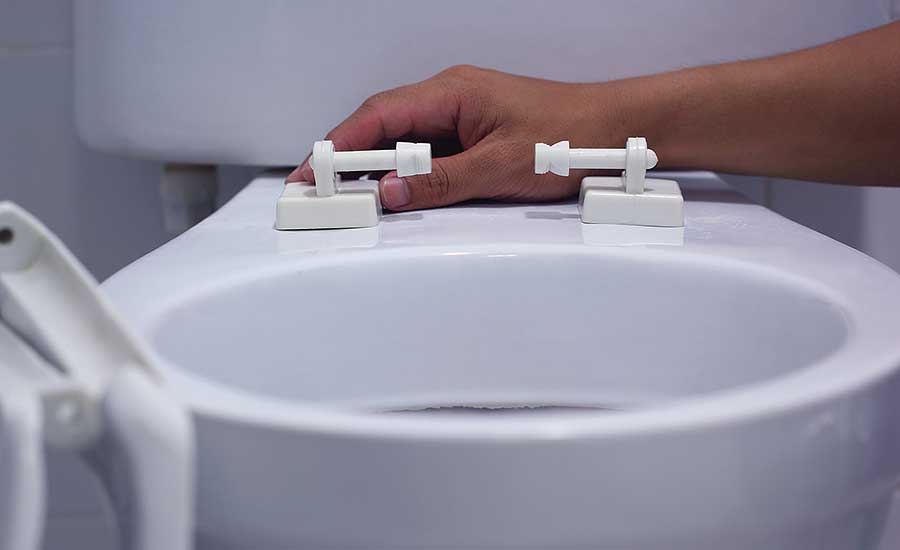How to sell and install bidet seats
It’s useful for plumbers and contractors to outline the long-term benefits of these devices.

Bidet seats are becoming more popular in the U.S., and models are available that may be retrofitted onto existing toilets.

The original seat needs to be removed and the seat mounting bracket anchors for the bidet seat put in their place when installing a bidet toilet seat.


Bidet seats have been commonplace in Europe for decades, but they are just barely rising in popularity in the U.S. While bidet seats have yet to be abundantly incorporated into commercial bathrooms, they are being added to more and more residences.
For many plumbers and contractors, this is new and unfamiliar territory. However, it can be a fairly quick job with the right resources.
The main consideration with bidet seats is that they often require plumbing and electrical work. With the right tools and the right seat, this shouldn’t be a problem. Nonetheless, knowledge is definitely power when it comes to installing a relatively unfamiliar product.
In addition to their hygienic benefits, many bidet seats have a sleek and modern look. As a result, many homeowners are installing them for their functionality as much as their aesthetics. The most appealing aspects of bidet seats are their self-cleaning functionalities and environmental benefits. In addition to adding some style to the bathroom, they are practical and an excellent investment for those who want to save money on toilet paper.
The installation process
Clients will typically begin by asking for brand recommendations. The TOTO Washlet is an excellent suggestion for its low price and name recognition. TOTO is a well-known toilet brand, and their elongated Washlet comes in at just under $500. ProStock and Brondell are also reputable bidet seat manufacturers and boast reasonable pricing.
While electronic bidet seats are typically just sold as an add-on for regular toilets, a toilet/bidet seat integration can be purchased for around $2,000.
For the bidet seat installation, an adjustable wrench, Phillips-head screwdriver, and relatively close power outlet is required. As bidet seats have power cords and require an electrical connection, this is where an electrician may be needed. If there is no outlet near the toilet, the easiest solution is to input an extension cord that trails along the trim of the bathroom.
Another option here is to run a load from any existing outlets in the bathroom to a new outlet. Otherwise, the last resort is to remove and install an entirely new toilet closer to the electrical outlet. Per the National Electrical Code, it is required to use a ground-fault circuit interpreter (GFCI), as these protect widely against electrocution and fare especially well in areas where there is a lot of water (such as bathrooms and kitchens) and potential for floods, leaks, etc.
According to the Decorative Plumbing & Hardware Association, bidet seats also require access to hot and cold supply valves, a P trap, and a box flange. The first step is to turn off the water supply and flush the toilet. Then, the original seat needs to be removed and the seat mounting bracket anchors for the bidet seat put in their place. Once the brackets have been added, the washlet can be slid into place. There should be an audible click confirming that the seat has been secured.
Following that, the T-valve that comes with the bidet seat must be attached to the toilet tank supply hose and the bidet seat supply hose. This will deflect water between the bidet spray and toilet tank. All connections should be tightened to prevent leaks. Lastly, the washlet must be plugged into the GFCI outlet and the water should be turned back on in order to test for any leaks.
Reasons to upsell bidets
As more Americans open up to the idea of installing a bidet in their home, it’s useful for plumbers and contractors to outline the long-term benefits of these devices. Aside from their hygienic, environmental, and self-cleaning characteristics, bidets can pay off in other ways. They save homeowners money and reduce household waste. The cost of spending on toilet paper will be cut down, and there will be no packaging to worry about. The water supply for the bidet costs exponentially less than toilet paper.
According to bidet installation professionals at Bidet King, the average cost to operate a bidet toilet seat per year is $45.73. This is in contrast to the $120 per year the average American spends on toilet paper and similar paper products per year, as per a recent Statista study.
In addition to this, bidets can decrease the amount of plumbing problems in the home. Decreased usage of toilet paper prevents against clogs in sewer pipes, an issue which can be costly — and unsightly — to fix.
Touting the fancy features of some more upscale and pricey bidets can also be a selling point, and clients are often intrigued by seat warming, warm-water rear/front wash, and built-in deodorizing features. Higher-end bidets even have motion-sensor capabilities that allow the lid to open up on its own when it senses that someone is near.
As a plumber or contractor, understanding the selling points and installation process behind bidets will certainly impress clients. A bidet is an innovative solution that is slowly gaining traction in American households and will soon become a more common product requested of plumbers.
Looking for a reprint of this article?
From high-res PDFs to custom plaques, order your copy today!









